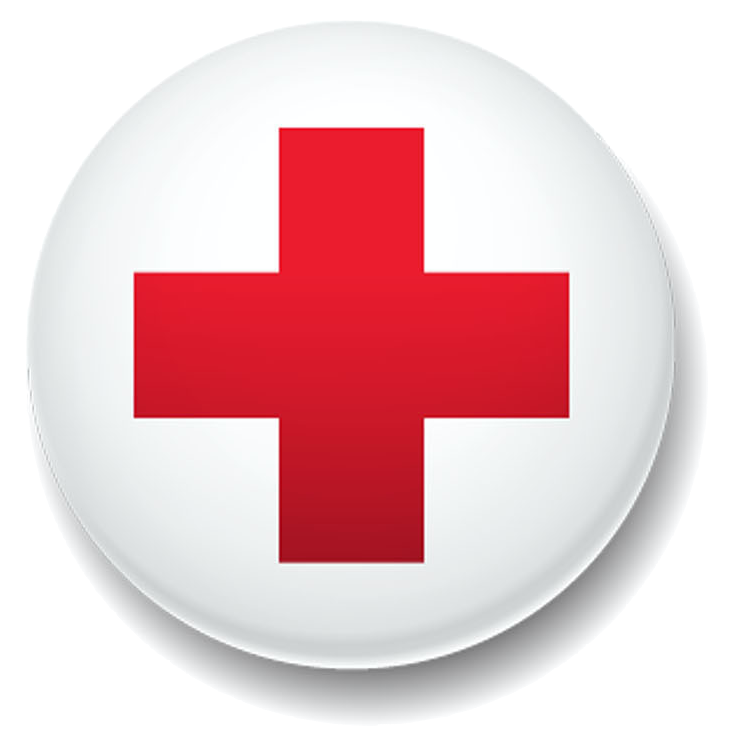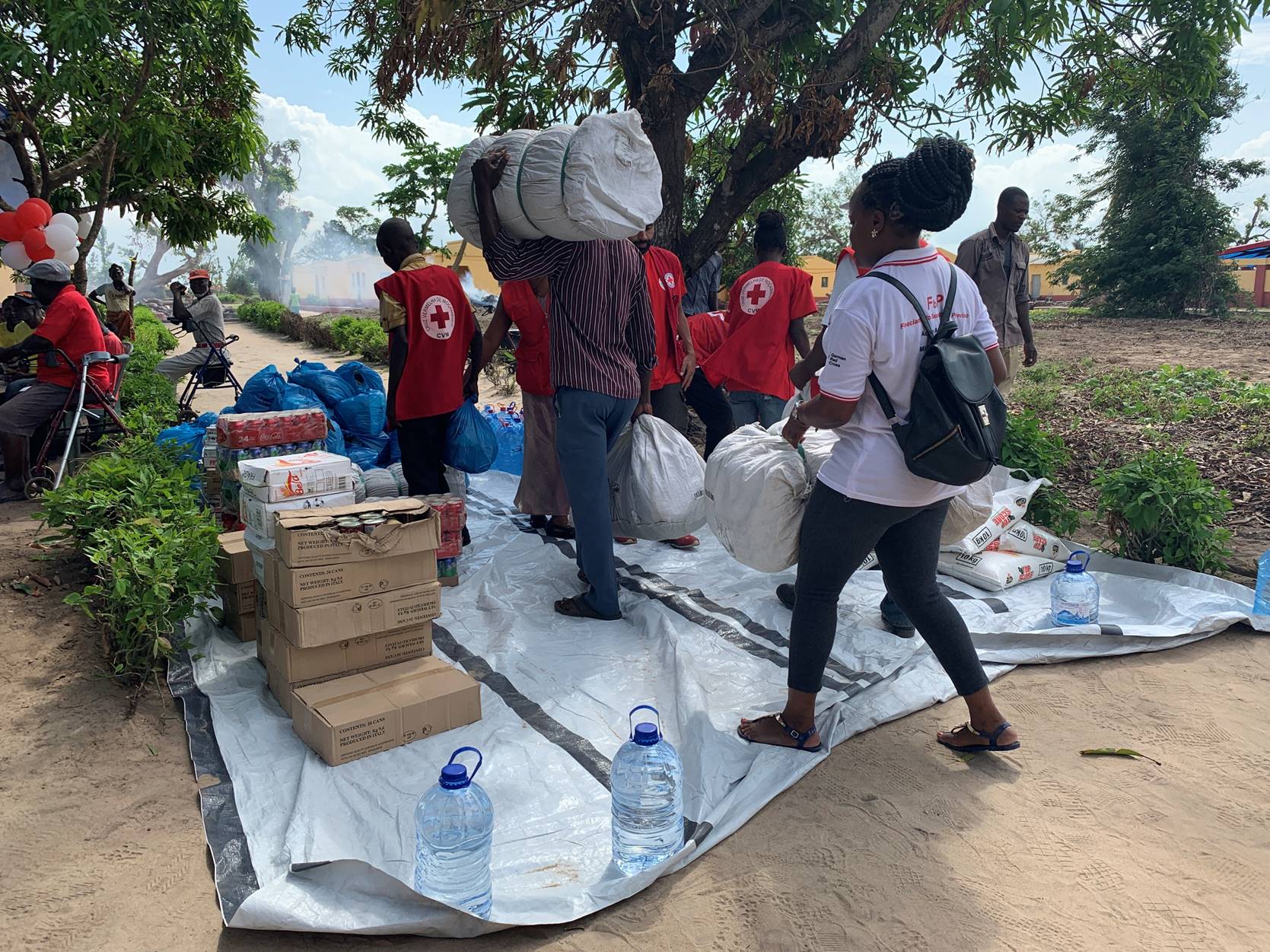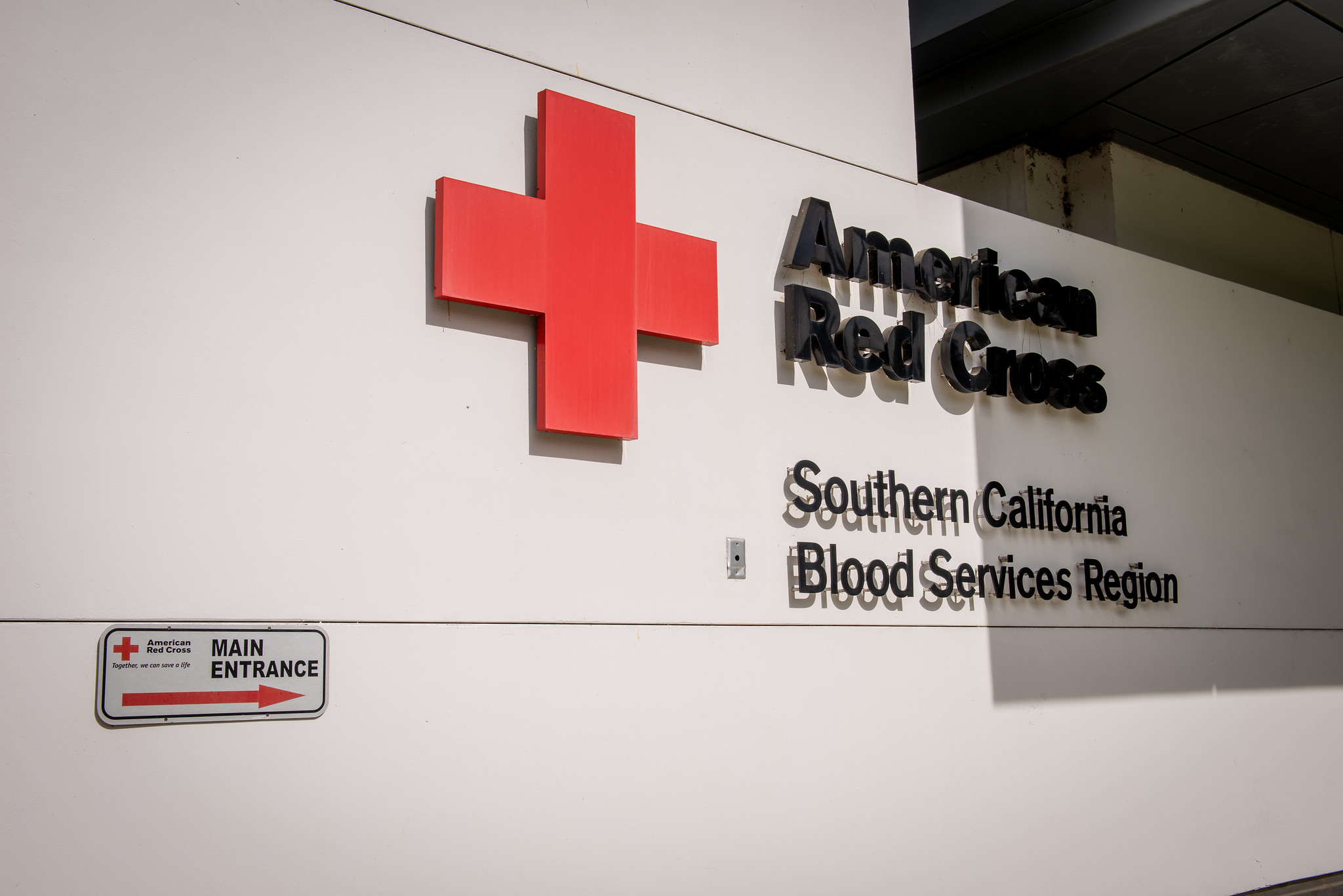Interview with Pam Hathaway, GIS (geographic information system) volunteer from the Los Angeles Region, who deployed to Mozambique as part of the International Federation of Red Cross and Red Crescent Societies’ (IFRC) response to Cyclone Idai. Interview has been edited for brevity and clarity.
What brought you to Mozambique? What was the Red Cross doing there and what was your role?
Tropical Cyclone Idai struck Mozambique in mid-March 2019. When a major international disaster like this occurs, the Red Cross and Red Crescent societies from around the world send help in the form of monetary donations, in-kind goods and personnel or teams with specific expertise.
The [IFRC] brings all of these pieces together into a coordinated disaster response. National societies specialize in different aspects of response. The American Red Cross has a few areas of focus; one of these is information management/GIS, which is where I come in. I’m on the Red Cross international disaster roster as a GIS specialist.
For the first few weeks of the IFRC response to Cyclone Idai, I worked remotely from home gathering data and making maps to help the first rotation of responders who were deployed to the field. For the second month, or second rotation, I was deployed in person to Mozambique as Information Management Coordinator. My job on the ground was to assist the “sectors” (Shelter, Psychosocial Support, Relief Distribution and Health) in tracking their activities; solve any data collection issues that might come up; and compile the data into dashboards to keep leadership in Mozambique and Geneva informed of our progress on the ground.
How long were you there?
I was deployed for one month, which seemed to be the most common length of mission. Some people, particularly in leadership positions, were scheduled for two or three months. It was an incredible experience, but I was definitely ready to come home when my time was up!
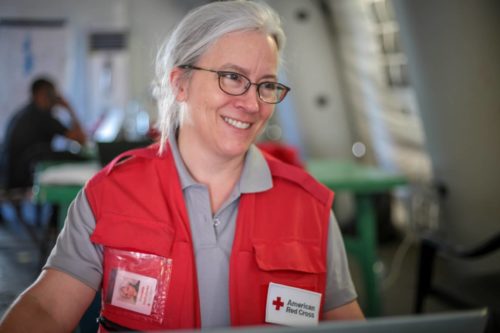
Where in Mozambique did you travel?
I was assigned to IFRC response headquarters in Beira, a small city on the central coast close to where Cyclone Idai made landfall. Headquarters was located in tents just off the tarmac at the Beira airport, on the outskirts of the city. My housing was about half a mile away from the airport across a field, in an 8-unit apartment building entirely filled with IFRC delegates.
The tents and apartments were managed by the Italian Red Cross basecamp team. Each apartment was equipped with a basic set of dishes, silverware, and one or two pans, as well as a few pantry staples—salt and pepper, cooking oil, sugar, tea, and corn flakes. There were new twin mattresses on the floor, a dining table, and a few folding chairs (eventually we repurposed a spare mattress as couch). We slept inside mosquito net tents on top of the mattresses, because although the apartments were otherwise modern, they were not mosquito-proof and malaria was a major concern in the region. It was a lot like camping indoors—the power went out frequently so flashlights were always kept handy.
How did your work there relate to the work you do in the LA Region?
At home I focus on GIS—mapping and other data-related projects— so in that way it was fairly similar. But what fascinated me were the differences between our domestic disaster responses and international responses.
Domestically, we use the Incident Command System, which is very structured—you know what to expect in every role and you know what’s expected of you. Internationally the org chart and specific roles are more fluid. You have to be flexible. IFRC responses are also much smaller because the goal is to support the host national society, utilizing local volunteers, rather than staffing the full response. I’m told that the group of 30-50 people on the ground for Idai was unusually large for IFRC, while I was there was unusually large. Domestically we might deploy 10 or 20 times that many people for a large response. I spent a lot of time just trying to figure out how I fit in to this totally different system.
Did you work with Red Crossers from other countries? If so, how was that experience?
We had a unique camaraderie; no matter where we were from, we were together as one under IFRC. The working language was English, but there would always be side conversations going on in Spanish, Portuguese, French, Finnish, or Italian. I was assigned to a two-bedroom apartment with delegates from Spain, Portugal, and Columbia. We pooled our grocery money and made dinner together every night, trading stories about our home societies. We bonded like family. I miss them!
What was the most memorable moment/part of the trip for you?
My job was desk-based in a tent at the airport and I lived barely half a mile away, so even the occasional trip to the grocery store in town was a big deal to me! For World Red Cross Day, a vague invitation was circulated to somehow celebrate with members of the local community. I was so excited to get away from the airport that I got into the IFRC van with no idea what was actually planned.
We drove into Beira, then turned down a dirt road into the midst of busy local market lined with stalls of fruit, clothing, and housewares. At the end of the market, the landscape opened into wetlands with lily ponds lining the road, which was now more sandy and deeply potholed. We covered about 10 miles in the next hour as the driver picked his way around road hazards. We passed through a brief bit of forest, and then a village. We finally came to a walled community of yellow cinderblock cottages—a home for the elderly. Bright blue tarps were laid out on the ground in a central square shaded by trees. We were soon joined by representatives from ICRC and volunteers from CVM (Cruz Vermelha Mozambique–the Mozambique Red Cross) who brought a truck loaded full of bottled water, blankets, and food.
The residents, many frail, came out and sat on the tarps on the ground. There was a ceremony, all in Portuguese so I’m not sure what was said, but it started and ended with singing and dancing. Afterwards we unloaded the truck and distributed the relief items to the residents, who each signed for their lot with a thumb print. Later on the drive back to Beira, just past the forested area, the driver suddenly stopped the van. Baboons were foraging along the road. He got out and handed a piece of bread to a big male about the size of a Great Dane. The rest of us stayed put in the vehicle!
It was an all-around incredible World Red Cross Day.
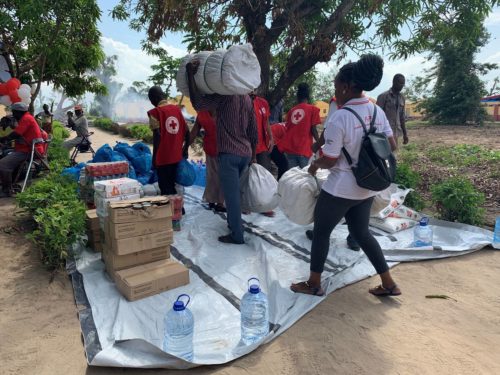
Anything else you want to share about your experience?
The first stop on my way to Mozambique was American Red Cross National Headquarters in Washington DC, for several hours of in-person briefings and equipment issue. My proudest moment of the whole deployment happened in the basement of NHQ, noticed only by me.
I was given a Pelican case full of camping and survival supplies, some electronics in a backpack, a few ARC shirts and hat, and one more thing–all wrapped up in cellophane, my bright red new disaster vest, with reversible Velcro panel on the back showing “ARC” on one side, “IFRC” on the other. I asked how I should wear it, and was told “IFRC.”
I felt so humbled and honored to be going out into the big world representing IFRC on behalf of the American Red Cross. It gave me chills. That vest means so much to me.
